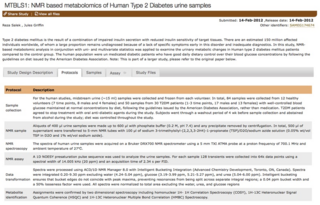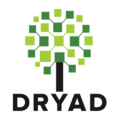BioMed Central (BMC) is a United Kingdom-based, for-profit scientific open access publisher that produces over 250 scientific journals. All its journals are published online only. BioMed Central describes itself as the first and largest open access science publisher. It was founded in 2000 and has been owned by Springer, now Springer Nature, since 2008.
PubMed Central (PMC) is a free digital repository that archives open access full-text scholarly articles that have been published in biomedical and life sciences journals. As one of the major research databases developed by the National Center for Biotechnology Information (NCBI), PubMed Central is more than a document repository. Submissions to PMC are indexed and formatted for enhanced metadata, medical ontology, and unique identifiers which enrich the XML structured data for each article. Content within PMC can be linked to other NCBI databases and accessed via Entrez search and retrieval systems, further enhancing the public's ability to discover, read and build upon its biomedical knowledge.
The California Digital Library (CDL) was founded by the University of California in 1997. Under the leadership of then UC President Richard C. Atkinson, the CDL's original mission was to forge a better system for scholarly information management and improved support for teaching and research. In collaboration with the ten University of California Libraries and other partners, CDL assembled one of the world's largest digital research libraries. CDL facilitates the licensing of online materials and develops shared services used throughout the UC system. Building on the foundations of the Melvyl Catalog, CDL has developed one of the largest online library catalogs in the country and works in partnership with the UC campuses to bring the treasures of California's libraries, museums, and cultural heritage organizations to the world. CDL continues to explore how services such as digital curation, scholarly publishing, archiving and preservation support research throughout the information lifecycle.
Agricultural Information Management Standards (AIMS) is a web site managed by the Food and Agriculture Organization of the United Nations (FAO) for accessing and discussing agricultural information management standards, tools and methodologies connecting information workers worldwide to build a global community of practice. Information management standards, tools and good practices can be found on AIMS:
The Digital Curation Centre (DCC) was established to help solve the extensive challenges of digital preservation and digital curation and to lead research, development, advice, and support services for higher education institutions in the United Kingdom.
Research data archiving is the long-term storage of scholarly research data, including the natural sciences, social sciences, and life sciences. The various academic journals have differing policies regarding how much of their data and methods researchers are required to store in a public archive, and what is actually archived varies widely between different disciplines. Similarly, the major grant-giving institutions have varying attitudes towards public archival of data. In general, the tradition of science has been for publications to contain sufficient information to allow fellow researchers to replicate and therefore test the research. In recent years this approach has become increasingly strained as research in some areas depends on large datasets which cannot easily be replicated independently.
Nature Precedings was an open access electronic preprint repository of scholarly work in the fields of biomedical sciences, chemistry, and earth sciences. It ceased accepting new submissions as of April 3, 2012.

The United States National Evolutionary Synthesis Center (NESCent) is a scientific research center in Durham, North Carolina. Known by its acronym NESCent, the center’s goal is to promote collaborative, cross-disciplinary research in evolutionary biology.
DataONE is a network of interoperable data repositories facilitating data sharing, data discovery, and open science. Originally supported by $21.2 million in funding from the US National Science Foundation as one of the initial DataNet programs in 2009, funding was renewed in 2014 through 2020 with an additional $15 million. DataONE helps preserve, access, use, and reuse of multi-discipline scientific data through the construction of primary cyberinfrastructure and an education and outreach program. DataONE provides scientific data archiving for ecological and environmental data produced by scientists. DataONE's goal is to preserve and provide access to multi-scale, multi-discipline, and multi-national data. Users include scientists, ecosystem managers, policy makers, students, educators, librarians, and the public.
TreeBASE was a repository of phylogenetic data published in scientific journals. In phylogenetic studies, research data are collected or generated, such as comparative observations made on a set of taxa, metadata about these taxa, and the phylogenetic trees that are inferred to best describe the evolutionary relationships between the taxa.
A data management plan or DMP is a formal document that outlines how data are to be handled both during a research project, and after the project is completed. The goal of a data management plan is to consider the many aspects of data management, metadata generation, data preservation, and analysis before the project begins; this may lead to data being well-managed in the present, and prepared for preservation in the future.
Open scientific data or open research data is a type of open data focused on publishing observations and results of scientific activities available for anyone to analyze and reuse. A major purpose of the drive for open data is to allow the verification of scientific claims, by allowing others to look at the reproducibility of results, and to allow data from many sources to be integrated to give new knowledge.
An open repository or open-access repository is a digital platform that holds research output and provides free, immediate and permanent access to research results for anyone to use, download and distribute. To facilitate open access such repositories must be interoperable according to the Open Archives Initiative Protocol for Metadata Harvesting (OAI-PMH). Search engines harvest the content of open access repositories, constructing a database of worldwide, free of charge available research.
Islandora is a free and open-source software digital repository system based on Fedora Commons, Drupal and a host of additional applications. It is open source software and was originally developed at the University of Prince Edward Island by the Robertson Library.
Enhanced publications or enhanced ebooks are a form of electronic publishing for the dissemination and sharing of research outcomes, whose first formal definition can be tracked back to 2009. As many forms of digital publications, they typically feature a unique identifier and descriptive metadata information. Unlike traditional digital publications, enhanced publications are often tailored to serve specific scientific domains and are generally constituted by a set of interconnected parts corresponding to research assets of several kinds and to textual descriptions of the research. The nature and format of such parts and of the relationships between them, depends on the application domain and may largely vary from case to case.
The Registry of Research Data Repositories (re3data.org) is an open science tool that offers researchers, funding organizations, libraries and publishers an overview of existing international repositories for research data.
Data publishing is the act of releasing research data in published form for use by others. It is a practice consisting in preparing certain data or data set(s) for public use thus to make them available to everyone to use as they wish. This practice is an integral part of the open science movement. There is a large and multidisciplinary consensus on the benefits resulting from this practice.

MetaboLights is a data repository founded in 2012 for cross-species and cross-platform metabolomic studies that provides primary research data and meta data for metabolomic studies as well as a knowledge base for properties of individual metabolites. The database is maintained by the European Bioinformatics Institute (EMBL-EBI) and the development is funded by Biotechnology and Biological Sciences Research Council (BBSRC). As of July 2018, the MetaboLights browse functionality consists of 383 studies, two analytical platforms, NMR spectroscopy and mass spectrometry.

Zenodo is a general-purpose open repository developed under the European OpenAIRE program and operated by CERN. It allows researchers to deposit research papers, data sets, research software, reports, and any other research related digital artefacts. For each submission, a persistent digital object identifier (DOI) is minted, which makes the stored items easily citeable.
The Biodiversity Literature Repository (BLR) is a biodiversity dedicated community created in November 11, 2013, in Zenodo, the open science repository at CERN and part of the European project OpenAIRE. The goal of BLR is to provide a long-term, stable, open repository that allows deposition of bio-taxonomic articles enhanced with custom metadata and links to data extracted from therein and deposited in BLR. As of April 25, 2021, this includes 94,443 taxonomic treatments and 293,457 figures from 48,993 articles which are made findable, accessible, interoperable and reusable FAIR data. Most of the data is uploaded on a continuous basis by Plazi using its TreatmentBank service based on their Plazi workflow, and Pensoft Publishers using BLR as repository for data published in their journals. The largest single re-user of data is the Global Biodiversity Information Facility (GBIF), using data from within 33,623 processed articles.





